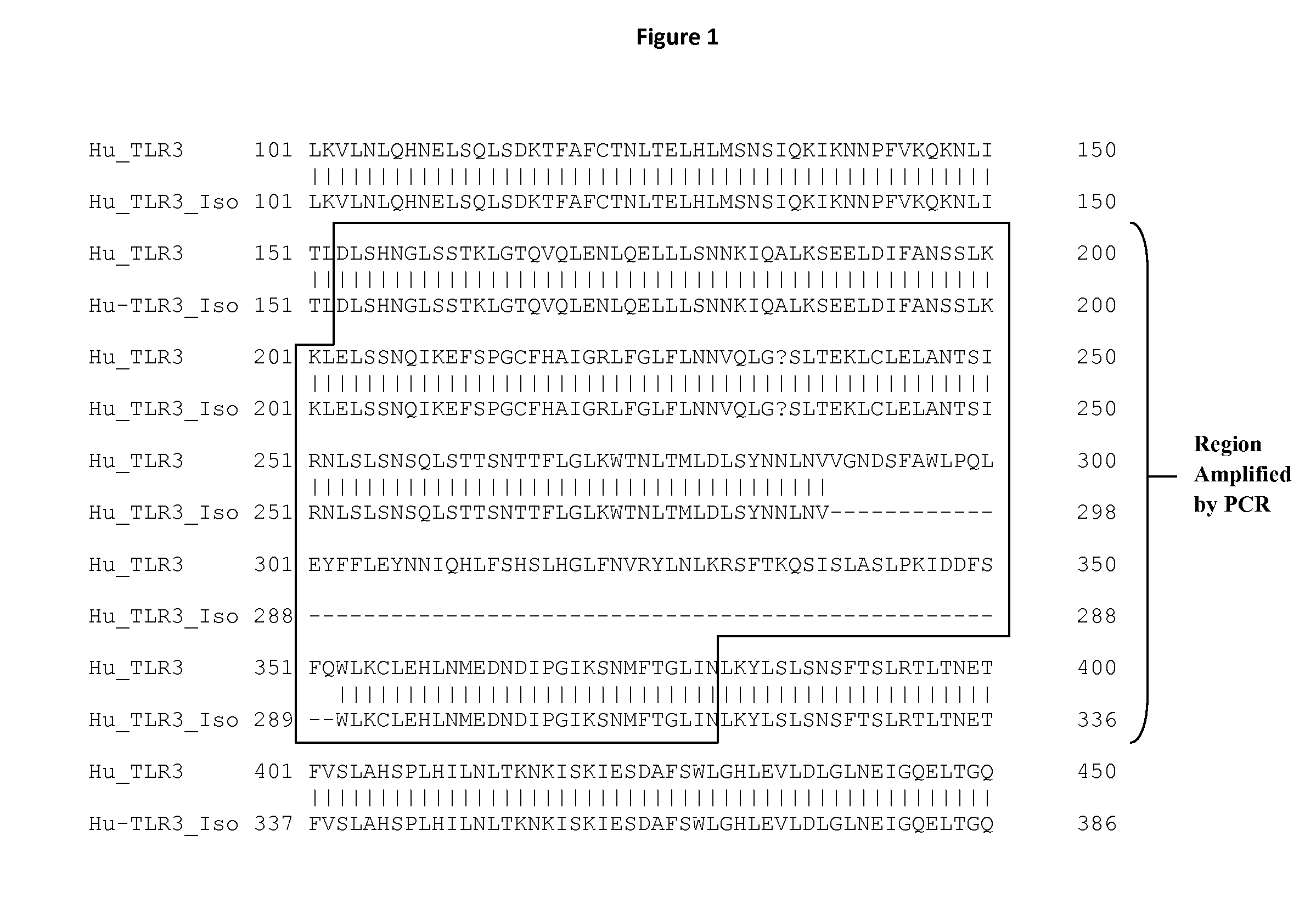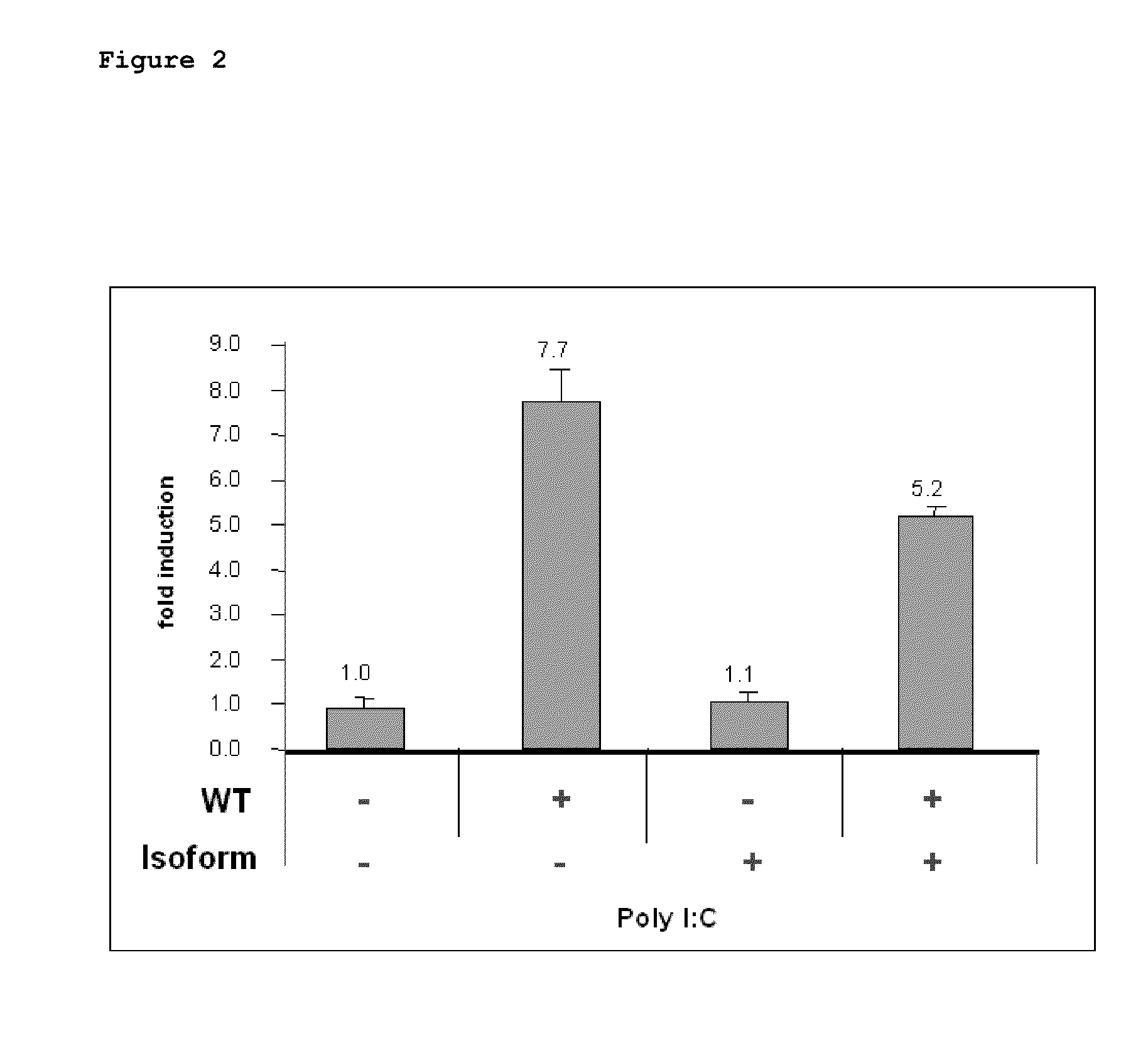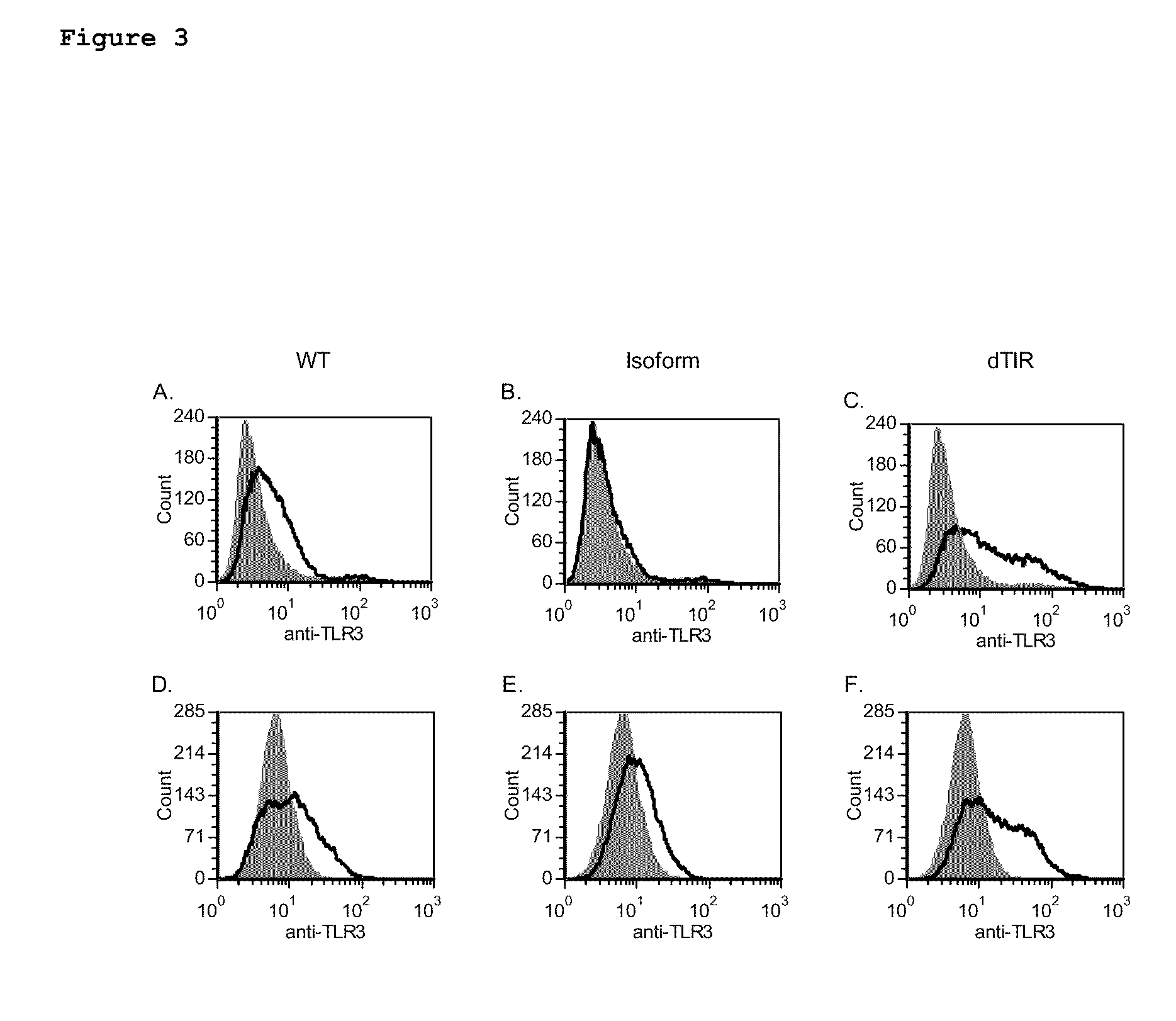Methods for Suppressing Toll-Like Receptor Activity
a toll-like receptor and activity technology, applied in the field of agents, can solve the problems of few treatment options and therapies for many of these conditions
- Summary
- Abstract
- Description
- Claims
- Application Information
AI Technical Summary
Benefits of technology
Problems solved by technology
Method used
Image
Examples
example 1
TLR3Δ64 is Expressed in Primary Cells
[0067]TLR3Δ64 is a naturally occurring TLR3 variant reported earlier having a deletion of 64 amino acids corresponding to amino acids 289-353 in the wild type TLR3 polypeptide (GenBank acc. No. NP 0032565.1; SEQ ID NO: 4) (Yang et al. Immunogenetics. 56:743-53, 2005). The function of the variant is not known. In this study, TLR3Δ64 sequence was identified and the variant shown to be expressed in primary human cells, including human bronchial epithelial cells.
[0068]Expression was assessed by PCR using oligonucleotide primers 5′GATCTGTCTCATAATGGCTTGTCA 3′ (SEQ ID NO: 5) and 5′GTTTATCAATCCTGTGAACATAT 3′ (SEQ ID NO: 6) according to Yang et al., (Yonesei Medical Journal 45:359-361, 2004) using standard procedures (Molecular Cloning: a Laboratory Manual, 2nd ed. Vols 1-3, Cold Spring Harbor Laboratory, 1989; Current protocols in molecular biology, Ausubel, ed. John Wiley & Sons, Inc, New York, 1997). In brief, primary normal human astrocytes (NHA) were...
example 2
TLR3Δ64 is Deficient in Signaling and Modulates TLR3 Activity
[0069]In order to assess potential functional differences between the wild type TLR3 and TLR3Δ64, ability of TLR3Δ64 to activate downstream signaling pathways was assessed. HEK293T cells were transiently transfected with plasmids containing WT TLR3 and / or TLR3Δ64 cDNA in pcDNA3.1, stimulated with poly (I:C), and the induction of NF-κB was measured using a luciferase reporter gene assay (FIG. 2). WT TLR3 demonstrated a 7.7 fold induction of TLR3-dependent NF-κB activity induced by poly(I:C), whereas there was no induction of TLR3-dependent NF-κB activation when cells were transfected with the TLR3Δ64 construct. Co-transfection of both WT TLR3 and TLR3Δ64 demonstrated a dominant negative effect for TLR3Δ64. TLR3Δ64 suppressed WT TLR3 activity by 30%.
[0070]The full-length human TLR3 cDNA (Genbank Acc. NO. U88879) was amplified from human dendritic cells and cloned into the pcDNA3.1. Using the primers (Forward: 5′-CGA TCT TTC ...
example 3
Deficient Trafficking of TLRA64
[0071]We studied surface expression, subcellular localization and protein stability of TLR3Δ64 to evaluate mechanism of suppression of the WT TLR3 activity by TLR3Δ64. Surface expression of TLR3Δ64 and TLR3 were studied by FACS analysis of overexpressed proteins in HEK293T cells. Contrary to wild type TLR3 localizing partially on cell surface (FIG. 3A), TLR3Δ64 was not detected on the surface of HEK293T cells (FIG. 3B). Both proteins, however, were present intracellularly (FIGS. 3D, 3E). A TLR3 mutant lacking the C-terminal signaling domain (TLR3ΔTIR) required for TLR3 signal transduction and shown to be deficient in inducing NF-κB activation was used as an additional control in this experiment (Matsumoto et al., Biochem. Biophys. Res. Commun. 293:1364-1369, 2002). Despite the absence of the TIR signaling domain and inability to activate downstream signaling, TLR3ΔTIR was found both on the surface and intracellularly (FIGS. 3C, 3F). Thus, lack of activ...
PUM
| Property | Measurement | Unit |
|---|---|---|
| temperature | aaaaa | aaaaa |
| time | aaaaa | aaaaa |
| length | aaaaa | aaaaa |
Abstract
Description
Claims
Application Information
 Login to View More
Login to View More - R&D
- Intellectual Property
- Life Sciences
- Materials
- Tech Scout
- Unparalleled Data Quality
- Higher Quality Content
- 60% Fewer Hallucinations
Browse by: Latest US Patents, China's latest patents, Technical Efficacy Thesaurus, Application Domain, Technology Topic, Popular Technical Reports.
© 2025 PatSnap. All rights reserved.Legal|Privacy policy|Modern Slavery Act Transparency Statement|Sitemap|About US| Contact US: help@patsnap.com



